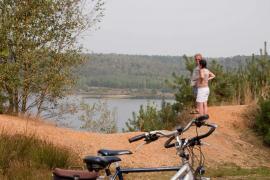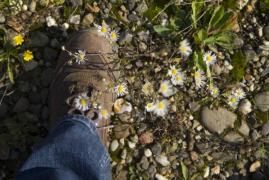In 2010, the leading Dutch economic research firm Triple E, conducted a study on the benefits of the Hoge Kempen National Park. The remarkable results of this research were summarised in the book "Hoge Kempen, hoge baten".
The study made it clear that in 2010, the nature of the Hoge Kempen National Park accounted for:
- The annual removal of 80 tonnes of fine dust from the air, the accretion of 20 000 m³/year of wood and the extraction of 20 million m³/year of drinking water, accounting for 15% of the annual production of the Vlaamse Maatschappij voor Watervoorziening.
- Annual benefits through CO² storage, water purification and fine dust capture of more than 1.2 M. Euros per year.
- 5 100 jobs in the region, of which 190 specifically because of its designation as a National Park in 2006.
- A turnover of 191 M. Euro/year from companies in related sectors in the region.
- An annual tax revenue for the government of over 13 M. Euro/year because of this turnover.
- A capital gain from real estate within a 300-metre radius of the National Park of more than 8 M. Euro.
- An annual recuperation effect for the government via the mechanism of real estate tax and registration duties of 1.4 M. Euro/year because of this added value.
The fact that the project also makes a structural contribution to the preservation of biodiversity (and the international obligations in this respect) and makes a significant contribution to the wellbeing and health of local residents and the more than 700 000 visitors per year was not even included in this calculation. After all, these values are difficult to express in monetary terms.




